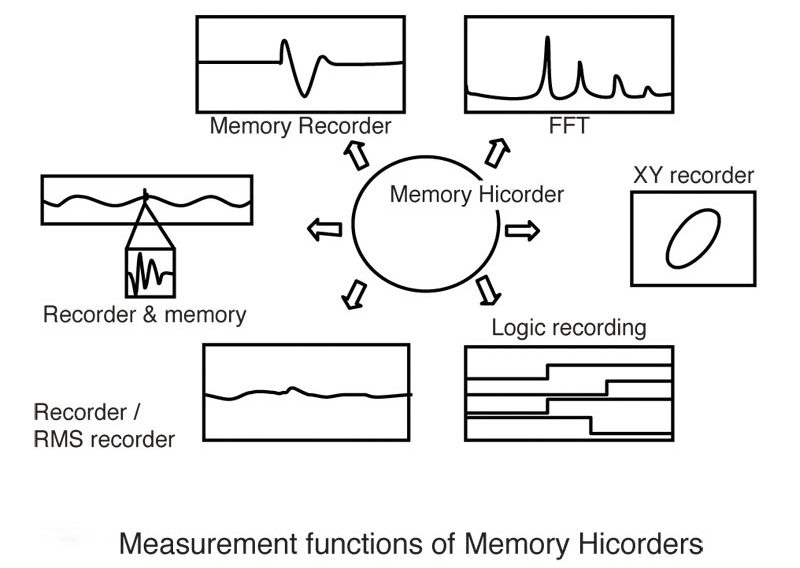Basic Measurement Functions of a Memory Hicorder
Memory HiCorder basic measurement functions
Each Memory HiCorder provides enough functionality to be used as a number of different types of measuring instrument.
■ Memory recorder function
The instrument can record high-speed transients and sudden phenomena whose timing is unknown. It can also perform a variety of waveform calculations.
■ Recorder function
Although the instrument can be used as a real-time recorder or normal recorder, its extremely fast response speed, which is on the order of several microseconds, also enables it to record the amplitude of phenomena such as noise, even at low speed settings.
■ RMS recorder function
The instrument can record RMS voltage levels of current input without an RMS converter, and it can record fluctuations in supply voltage.
■ XY Memory・XY Recorder Function
The instrument can be used as an X-Y recorder for data from multiple X-T (time axis) recorded channels, with a user-specified channel as the axis.
■ Recorder&Memory Function
Recorder functionality can be used to record long-term fluctuations, and memory recorder functionality can be used to record sudden phenomena.
■ FFT Function
The instrument can analyze the frequency components of phenomena such as vibrations using its frequency analysis function.
■ Logic Recording Function
In addition to analog input, the instrument can record logic. Mixed digital/analog recording makes it possible to measure characteristics such as sequence timing.

